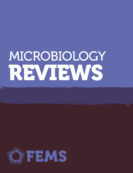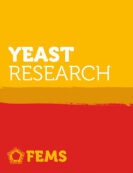FEMS Microbiology Ecology Poster Prize: Scott Klasek
The International Symposium on Subsurface Microbiology 2017 (ISSM 2017)
The ISSM 2017 Annual Meeting took place in Rotorua, New Zealand in November, aimed at providing a better understanding of the ecology, microbial community composition and function, and biogeochemistry of the earth’s subsurface environments. FEMS Microbiology Ecology has published a Thematic Issue from this meeting and also awarded a Poster Prize to Scott Klasek. Read an interview with Scott as he talks about his scientific research below.
Scott Klasek
What is your current position, and what was your scientific journey to get there?
I
‘m a graduate (PhD) student in Microbiology at Oregon State University. I earned my BS degree in Biochemistry and a certificate in Environmental Studies at the University of Wisconsin.
I originally planned on going into medicine, but realized I really liked ecology. This, combined with my biochemistry background, made environmental microbiology a particularly fascinating field for me.
After my undergraduate, I worked as a technician in a genetics lab at the University of Wisconsin for a year and a half, getting comfortable in an academic setting before I decided to apply to graduate schools.”
Could you describe the research your poster covered?
The poster I presented focused on characterizing microbial communities coming out of a mud volcano on the Mediterranean seafloor just offshore Calabria, Italy. Mud volcanoes are not real volcanoes–they are formed from “eruptions” of muds and fluids along convergent plate margins where they emit lots of methane into overlying ocean waters. This mud volcano, Venere, is active, expelling mud flows from its summit that have been mobilized from several km below the seafloor.
I’m looking at how microbial communities might shift after the mud flows emerge from a deep subsurface environment and begin to take in seawater. I’m also investigating the types of genes present in these microbes to determine what kinds of biogeochemical cycles they could mediate, like anaerobic methane oxidation and ammonium oxidation.
This type of analysis could also give insight into how microbes from such a deep subsurface environment could obtain energy or adapt to the unusual chemistry of this system. It also suggests these communities at Venere Mud Volcano are distinct from many other subseafloor environments that have been previously described.”
What do you hope to focus your research on in the future?
I am still considering my post-graduate school possibilities, but I hope my future research will allow me to continue characterizing microbes in complex communities and how their activities and dynamics influences processes crucial for ecosystem services or even human health.
I sort of envision myself with one hand in the lab setting up complex incubations, and the other on the command line processing sequence data. We’re only just beginning to understand the diversity of microbes and their functional capabilities, which makes it a very interesting time to be in this field.”
All but one of the FEMS journals are fully open access (OA), with one journal, FEMS Microbiology Letters, offering free-to-publish and OA options. Open access is key to supporting the FEMS mission of disseminating high quality research as widely as possible: when high quality, peer reviewed sound science is open access, anyone, anywhere in the world with an internet connection, can read it.







